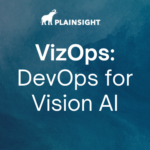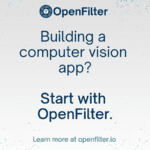While high-risk industries like construction and manufacturing account for the majority of serious on-site incidents, each unique workplace presents possible perils to employees and customers that computer vision can help detect to avoid injuries and accidents.
The National Safety Council (NSC) is already well aware of the potential for visual data analytics to help reduce workplace injuries and fatalities. Computer vision solutions are among the numerous technologies explored by NSC as part of its Work to Zero campaign. Work to Zero, kicked off in 2019, aims to address the fact that workplace fatalities have decreased at a far slower rate than injuries since the early 1990s. Despite considerable effort and investment, workplace deaths dropped just 14% between 1992 and 2020 compared to a more than 70% decrease in overall injuries over the same period. NSC is hopeful that boosting awareness of technologies like computer vision, drones, and wearables can drive down workplace fatalities and, in time, eliminate them altogether.
Enterprises are recognizing computer vision’s capabilities to protect the safety of worksites and wellbeing of employees as well, and are partnering with solution providers to monitor their facilities, predict and detect hazards and risks, enforce compliance regulations, and meet a higher safety standard.
Detecting Risk Factors for a Safe, Productive Workplace
In most workplace settings, it’s simply unrealistic to expect safety officers and supervisors to recognize every potential risk factor every time. Consider a factory: A safety officer might be tasked with monitoring activity in loading zones, across assembly lines, and throughout a warehouse all at once. Even on the smaller scale of a grocery store or restaurant, human monitors are typically given a nearly impossible task.
Hazard Detection
From wet floors to unsteady equipment to faulty machinery, models trained to detect workplace hazards offer real-time insights and help automate corrective responses as well as incident logging for training purposes. If these solutions catch on in retail settings, the days of hearing, “clean-up on aisle 5” may be over. Computer vision models have the power to recognize a spill and send someone out with a mop in the time it would normally take to make such an announcement.
Computer vision is even capable of detecting hazards like gas leaks that are imperceptible to the naked eye.
Detect Safety Violations with Computer Vision
Improper PPE usage and unexpected hazards are among the leading causes of workplace injuries. According to the National Safety Council, 22% of all workplace injuries stem from simple overexertion. While service industry workers report the highest rates, employees in sectors like healthcare and retail also face these risks in large numbers.
By training computer vision models to detect when an employee enters a zone where PPE is required, organizations can reduce risk in real time. When a potential safety violation is identified, the system can immediately alert the on-site manager—helping prevent injuries before they happen.
Keeping Customers Safe and Avoiding Recalls
Deployed throughout the manufacturing and production cycle, computer vision protects consumers as well with models for detecting foreign objects, packaging defects, and other hazards that might otherwise go undetected and cause a recall later on. With automated alerts empowered by computer vision’s unblinking eye, organizations can mount a response to contaminated products, faulty packaging, and other issues before products reach customers – let alone cause bigger, more costly problems.
Even when products are pulled from store shelves quickly, recalls can have serious consequences for food and beverage manufacturers. Writing for Quality Assurance Magazine in 2021, Amy Phillpott concludes that most cost estimates are based on outdated data and that even recalls that are managed within a single month and do not affect consumers could leave enterprises with tens of millions in expenses.
Take the Luck Out of Workplace Safety
Plainsight has worked with customers to build models for safety monitoring, foreign object detection, and more. Schedule a call to learn more about how our mix of computer vision expertise, a centralized platform, and end-to-end managed services can help you maintain safer, more productive facilities while generating business-critical data for process improvement, revenue generation, and more.



